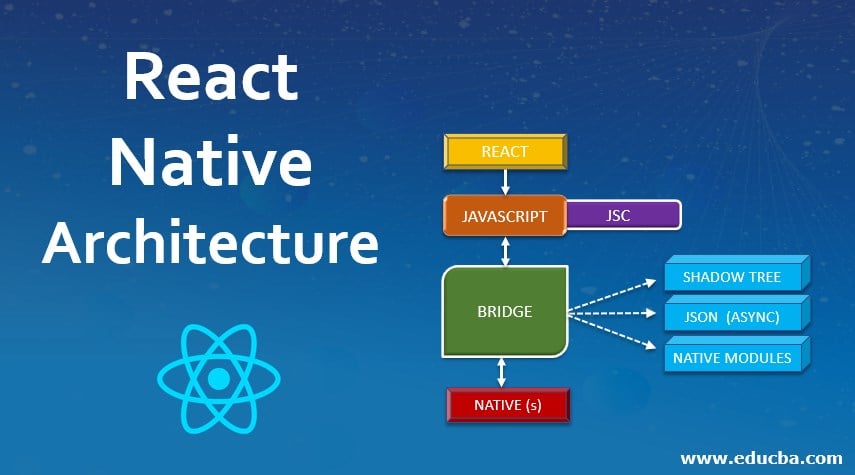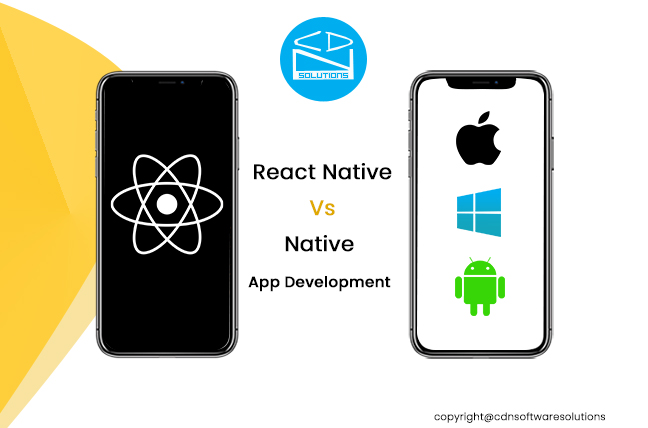In the ever-evolving landscape of application development, the quest for a “write once, run anywhere” solution has been a long-standing ambition. For years, React developers have navigated a fragmented ecosystem, building for the web with frameworks like Next.js or Remix, and then rebuilding for mobile with React Native. While code-sharing strategies and universal component libraries have bridged some gaps, a fundamental divide in architecture, data fetching, and state management has persisted. This separation often leads to duplicated effort, inconsistent user experiences, and increased maintenance overhead.
Recent developments in the Tamagui News sphere are signaling a monumental shift in this paradigm. A new, opinionated framework is emerging that aims to deliver on the promise of true universality. It doesn’t just share UI components; it unifies the entire application stack—from web to native—under a single, cohesive architecture. More profoundly, it champions a “local-first” approach to data, fundamentally changing how we think about state, performance, and offline capability. This article provides a comprehensive technical exploration of this groundbreaking framework, examining its core concepts, implementation details, and its potential impact on the broader React News and React Native News ecosystems.
What is This New Paradigm? A Shift for React Developers
At its core, this new framework, built upon the solid foundation of Tamagui, is an integrated solution for building universal applications. It combines a powerful UI kit with a prescriptive architecture that addresses the most significant challenges in cross-platform development. It achieves this through two primary innovations: deep platform unification and a local-first data layer.
Beyond Shared Components: True Universal Apps
Tamagui has already made significant strides in unifying the UI layer. Its optimizing compiler generates platform-specific styles from a single, shared component definition, offering near-native performance without sacrificing developer experience. This is a significant step up from libraries like React Native Paper News or NativeBase News, which primarily focus on component aesthetics. This new framework takes that philosophy to the next level.
It provides a unified structure for routing, build processes, and application logic. Imagine a single codebase where your routing logic, defined once, works seamlessly across web (server-side rendered), iOS, and Android. This is achieved by abstracting platform-specific tools like React Router News for web and React Navigation News for mobile behind a single, universal API. The underlying build tooling is similarly unified, often leveraging a monorepo setup that orchestrates Vite News or a Next.js-like server for the web and Metro for native builds via Expo News.
// A simple, universal component using Tamagui
// This code runs identically on web, iOS, and Android.
import { YStack, H2, Paragraph, Button } from 'tamagui';
import { Heart } from '@tamagui/lucide-icons';
export function UniversalCard({ title, content, onAction }) {
return (
<YStack
padding="$4"
borderRadius="$6"
backgroundColor="$background"
borderWidth={1}
borderColor="$borderColor"
space="$3"
hoverStyle={{ backgroundColor: '$backgroundHover' }}
pressStyle={{ backgroundColor: '$backgroundPress' }}
>
<H2>{title}</H2>
<Paragraph>{content}</Paragraph>
<Button
icon={Heart}
onPress={onAction}
alignSelf="flex-start"
>
Take Action
</Button>
</YStack>
);
}Embracing the Local-First Architecture
Perhaps the most revolutionary aspect of this new framework is its commitment to a local-first data architecture. In a traditional web application, the server is the single source of truth. The client fetches data, displays it, and sends mutations back to the server. This model, while ubiquitous, is fragile; it depends entirely on a stable, low-latency internet connection. Libraries like React Query News, Apollo Client News, and Urql News have done an excellent job managing the complexities of this model, but they still operate within its constraints.
A local-first approach inverts this. The primary source of truth becomes a database on the client device (e.g., SQLite). The application reads from and writes to this local database, resulting in a UI that is incredibly fast and responsive, as it never has to wait for a network request to complete. The network is then used as a secondary channel for synchronizing the local data with a backend server and other clients. This makes the application resilient, fully functional offline, and inherently collaborative.
Implementation Details: Building Your First Universal, Local-First App

Adopting this new framework involves a shift in thinking, particularly around data modeling and state management. The initial setup is designed to be streamlined, providing a robust foundation for building complex applications.
Project Structure and Tooling
A typical project is structured as a monorepo, often managed with tools like Turborepo or Nx. This allows for clear separation of concerns while maintaining a single point of entry for dependencies and build scripts. The structure might look something like this:
apps/expo: The React Native/Expo application.apps/next: The Next.js web application (or another web framework like Remix News).packages/ui: Shared Tamagui components, like theUniversalCardfrom the example above.packages/data: The core of the local-first architecture, defining the data models and synchronization logic.
This setup ensures that the UI and data logic are truly universal, consumed by platform-specific entry points in the apps directory. This modularity is a core principle, moving beyond the monolithic structures seen in older frameworks like Gatsby News or Blitz.js News.
Defining a Local-First Data Model
The data layer is where the local-first magic happens. Instead of defining API endpoints, you define data models that will be stored in the local database. This is often done using an Object-Relational Mapping (ORM) library designed for client-side databases, such as WatermelonDB or a custom-built solution.
You define your schema, including tables, columns, and relations. The framework then uses this schema to manage the local database and handle the complex task of syncing data with a remote server. This approach simplifies data access within your components significantly.
// Conceptual example of defining a data model for a local-first database
// (Syntax inspired by libraries like WatermelonDB)
import { Model } from '@nozbe/watermelondb';
import { field, text, date } from '@nozbe/watermelondb/decorators';
export class Post extends Model {
static table = 'posts';
@text('title') title;
@text('content') content;
@field('is_published') isPublished;
@date('created_at') createdAt;
// Relation to an 'author' table
@relation('authors', 'author_id') author;
// Example of a model-specific action
async publish() {
await this.update(post => {
post.isPublished = true;
});
}
}
// This schema would be used to set up the local database
// and drive the synchronization process.Advanced Techniques: State Management and Data Sync
In a local-first application, the lines between server state and client state become blurred. This has profound implications for how we manage state and handle data flow throughout the application.
Local Database as the Single Source of Truth
With the local database acting as the source of truth, traditional state management patterns evolve. Much of the global state that would have been managed by libraries like Redux News or Zustand News is now simply a query against the local database. The ORM provides reactive hooks that automatically update your components when the underlying data changes, whether that change comes from a user action or a background sync.
This doesn’t eliminate the need for client-side state managers like Jotai News or Recoil News, but it refines their role. They become ideal for managing ephemeral UI state—such as form inputs, modal visibility, or theme selection—while the database handles all the persistent application data. This separation creates a clean and predictable state management architecture.

// Conceptual example of a React component subscribing to local data changes.
// The `useQuery` hook is reactive.
import { useDatabase } from './data-context';
import { Post } from './models/Post';
import { withObservables } from '@nozbe/watermelondb/react';
// Component to display a list of published posts
const PostListComponent = ({ posts }) => {
return (
<YStack space>
{posts.map(post => (
<UniversalCard key={post.id} title={post.title} content={post.content} />
))}
</YStack>
);
};
// HOC that connects the component to a database query
const enhance = withObservables(['posts'], () => {
const database = useDatabase();
return {
posts: database.get('posts').query(
Q.where('is_published', true)
).observe(),
};
});
export const PublishedPostsList = enhance(PostListComponent);The Synchronization Layer
The unsung hero of a local-first system is the synchronization engine. Its job is to efficiently and reliably sync the local database with a remote backend without blocking the UI. This is a complex computer science problem, often solved using techniques like Conflict-Free Replicated Data Types (CRDTs) or operational transforms. Fortunately, the framework aims to abstract this complexity away from the developer.
Your backend API changes from a standard CRUD (Create, Read, Update, Delete) service to a synchronization endpoint. The client sends a batch of local changes and receives a batch of remote changes, which are then applied to the local database. This architecture is more resilient to poor network conditions and enables powerful features like real-time collaboration with minimal effort.
Best Practices and Optimization Strategies
Building high-performance, universal, local-first applications requires attention to a few key areas. Leveraging the full power of the Tamagui stack and understanding the nuances of local data management are crucial for success.
Performance and Optimization
Performance is a first-class citizen in the Tamagui ecosystem. The Tamagui compiler is key, as it flattens your style definitions into atomic CSS on the web and optimized style objects on native, eliminating the runtime overhead associated with most cross-platform styling solutions. When working with local-first data, it’s important to design efficient queries. Avoid fetching large, unnecessary datasets into memory. Use paginated queries and ensure your database tables are properly indexed to keep the UI snappy, even with thousands of records.

Testing a Unified Application
A unified codebase simplifies testing. Unit and integration tests can be written once using tools like Jest News and React Testing Library News and run in a single environment (e.g., Node.js). For end-to-end testing, a multi-pronged approach is necessary. Use Cypress News or Playwright News to test web-specific flows in a real browser, and leverage a native testing framework like Detox News to validate user journeys on iOS and Android simulators. This comprehensive strategy ensures that both the shared logic and the platform-specific integrations are robust and bug-free.
Integrating with the React Ecosystem
This new framework provides a strong architectural foundation but doesn’t replace the rich React ecosystem. You will still reach for best-in-class libraries to solve specific problems. For complex forms, React Hook Form News or Formik News remain excellent choices. For sophisticated animations and gestures, libraries like React Native Reanimated News and Framer Motion News integrate beautifully with Tamagui components. The framework’s goal is to provide the “macro-architecture,” giving you the freedom to choose the best “micro-architecture” tools for the job.
Conclusion: The Future is Unified and Local-First
The emergence of this new framework from the Tamagui ecosystem represents a significant milestone in the journey toward truly universal application development. By combining a best-in-class universal UI system with a forward-thinking local-first data architecture, it addresses two of the most persistent challenges in modern software engineering: the web/native divide and the reliance on a stable network connection.
This approach promises to unlock unprecedented levels of developer productivity and deliver a superior, more resilient user experience. For developers in the React News and Expo News communities, it’s time to start exploring this new paradigm. It requires a shift in mindset away from the traditional client-server model, but the rewards—faster, more robust, and truly universal applications—are well worth the investment. The future of React development may very well be unified, universal, and happening right on your device.











